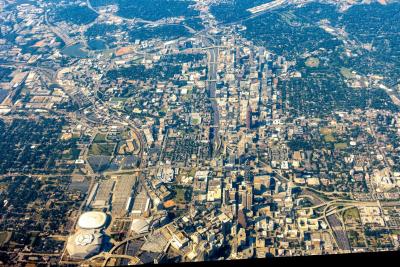Landscape Metrics Play a Role in Population Downscaling
Population downscaling allows researchers to derive higher spatial resolution population data based on coarser resolution population data. Landscape metrics calculated from land cover maps can be used to quantify urban spatial structural characteristics such as clustering, fragmentation, and patchiness. Scientists hypothesize that these metrics correlate with population density. In this study, researchers use landscape metrics to downscale population. Their results show that certain landscape metrics regularly outperform traditional population downscaling methods.
Population downscaling and interpolation methods are necessary for obtaining population data in the spatial units used in urban planning, demography, and environmental modeling. Population data are typically aggregated at census enumeration units, which can have arbitrary and temporally evolving boundaries. Previous population downscaling methods ignore urban patterning information that may serve as a strong indicator of population. Landscape metrics derived from imperviousness data, which represents the percentage of urban area over total area for each pixel on the map, offer a promising approach to capture these patterns. The results show that certain landscape metrics regularly outperform other traditional population downscaling methods.
Population downscaling and interpolation methods help produce data needed in urban planning, demography, and environmental modeling. Population data are typically aggregated at census enumeration units, which are too coarse for many applications. Previous approaches to population downscaling using imperviousness data, known as imperviousness-based dasymetric mapping, ignore imperviousness patterning within cells, which may serve as a strong indicator of population. Landscape metrics derived from imperviousness data offer a promising approach to capture more detailed population patterns. In this study, researchers incorporated landscape metrics derived from impervious cover percentage maps into intelligent dasymetric mapping to downscale population from census tracts to block groups. They used data from four states with varying population densities: Connecticut, South Carolina, West Virginia, and New Mexico. They compared the performance of the landscape metrics-based models against two baseline models in 2000, 2010, and 2020. The results showed that intelligent dasymetric mapping using landscape metrics generally outperforms the two baseline models. The team further compared the performance of landscape metrics for dasymetric mapping against traditional datasets (e.g., land use, roads). They found that class area, landscape shape index, and number of patches consistently achieve lower error rates than the other datasets.

